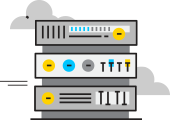Introduction
In the realm of computing systems, the Memory Data Register (MDR) plays a pivotal role in the efficient exchange and manipulation of data. As a crucial component of the Central Processing Unit (CPU), the MDR facilitates the seamless movement of data between the CPU and memory, enabling various computing operations. This article delves into the history, internal structure, key features, types, usage, and future perspectives of the Memory Data Register, shedding light on its significance in the world of computing.
The History of the Memory Data Register
The concept of the Memory Data Register can be traced back to the early days of computing. During the development of the von Neumann architecture in the 1940s, which laid the foundation for modern computing systems, the need for a fast data transfer mechanism between the CPU and memory became evident. As a result, the Memory Data Register was introduced as a fundamental element of this architecture.
Detailed Information about Memory Data Register
The Memory Data Register serves as a temporary storage location within the CPU, responsible for holding data being fetched from or written to the main memory. It acts as an intermediary between the CPU and RAM (Random Access Memory), ensuring smooth data flow during the execution of instructions. The MDR’s size is usually determined by the computer’s architecture and has a significant impact on the system’s overall performance.
The Internal Structure of the Memory Data Register
The internal structure of the Memory Data Register is straightforward yet crucial. It consists of multiple flip-flops or storage elements, with each element representing a binary digit (bit) of data. The total number of bits in the MDR defines its capacity and determines the maximum amount of data it can hold at any given time. Common MDR sizes include 8-bit, 16-bit, 32-bit, and 64-bit configurations, with larger sizes offering increased data-handling capabilities.
How the Memory Data Register Works
When the CPU needs to access data from RAM or write data back to RAM, the Memory Data Register comes into play. The data transfer process involves several steps:
- Fetch: During the fetch cycle of a CPU instruction, the memory address containing the data to be accessed is sent to the Memory Address Register (MAR).
- Retrieve: The MAR communicates the memory address to the RAM, which retrieves the corresponding data and transfers it to the Memory Data Register (MDR).
- Execution: The CPU performs the necessary operations on the data stored in the MDR.
Analysis of Key Features of Memory Data Register
The Memory Data Register possesses several key features that make it a critical element of modern computing systems:
-
Data Buffering: The MDR acts as a buffer between the CPU and memory, allowing for faster data transfers since it holds data temporarily while the CPU processes it.
-
Word Size Compatibility: The MDR’s word size compatibility with the CPU ensures smooth and efficient data exchange, preventing data alignment issues.
-
Data Manipulation: The MDR enables data manipulation and processing within the CPU, facilitating arithmetic and logical operations.
-
Multiple Accesses: The MDR can handle multiple data accesses during a single CPU cycle, enhancing the system’s performance.
Types of Memory Data Register
The Memory Data Register comes in various types, categorized based on their word sizes and usage in different computing systems. The most common types include:
| Type | Word Size | Usage |
|---|---|---|
| 8-bit MDR | 8 bits | Found in early microcontrollers |
| 16-bit MDR | 16 bits | Used in older microprocessors |
| 32-bit MDR | 32 bits | Common in modern CPUs and systems |
| 64-bit MDR | 64 bits | Found in high-performance systems |
Ways to Use Memory Data Register: Challenges and Solutions
The Memory Data Register’s primary usage revolves around data movement between the CPU and memory. However, several challenges may arise during its utilization, such as:
-
Data Integrity: Ensuring data integrity during data transfers is crucial, as errors may lead to system crashes or incorrect results. To address this, error-checking mechanisms like parity or checksums can be implemented.
-
Data Size Mismatch: When the data size in the MDR does not match the CPU’s word size, the CPU might need to perform multiple fetches or split the data, affecting performance. To overcome this, careful data alignment and padding techniques are employed.
-
Cache Coherency: In multi-core systems, maintaining cache coherency is vital to avoid data inconsistencies. Advanced cache coherence protocols help synchronize data across cores and the Memory Data Register.
Main Characteristics and Comparisons
Below are some essential characteristics and comparisons of the Memory Data Register with similar terms:
-
Memory Data Register (MDR) vs. Memory Address Register (MAR): While both are crucial for data movement, the MDR holds the data being accessed, while the MAR holds the memory address where the data is located.
-
MDR vs. Accumulator: The Accumulator is another CPU register that holds data temporarily for arithmetic operations. However, the MDR’s primary function is data transfer, not computation.
-
MDR vs. Program Counter (PC): The Program Counter holds the address of the next instruction to be fetched, while the MDR holds data being fetched or written.
Perspectives and Future Technologies
As technology advances, the Memory Data Register’s importance remains relevant, and advancements in semiconductor technology continue to increase MDR capacities and speeds. Future developments might include:
-
Higher Bit Width: Increasing MDR word sizes to handle larger chunks of data in a single transfer.
-
Improved Cache Integration: Integrating cache memory closer to the MDR to reduce latency and enhance data access speeds.
-
Optimization Algorithms: Developing sophisticated algorithms to prioritize and manage data transfers based on usage patterns and criticality.
Memory Data Register and Proxy Servers
Proxy servers, like those provided by OneProxy (oneproxy.pro), can benefit from Memory Data Registers in their operations. Proxy servers handle a vast amount of data traffic, and efficient data transfer between the server’s CPU and memory is crucial for optimal performance. The Memory Data Register’s role in buffering and accelerating data movements can significantly enhance the proxy server’s response times and overall efficiency.
Related Links
For more information about the Memory Data Register and related topics, you can explore the following resources:
In conclusion, the Memory Data Register remains a fundamental component of computing systems, ensuring smooth data flow between the CPU and memory. Its continued development and integration with advanced technologies will undoubtedly shape the future of computing and contribute to more efficient and powerful systems.




